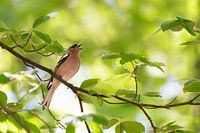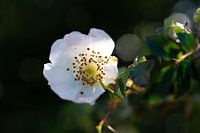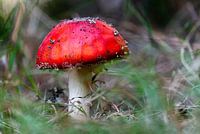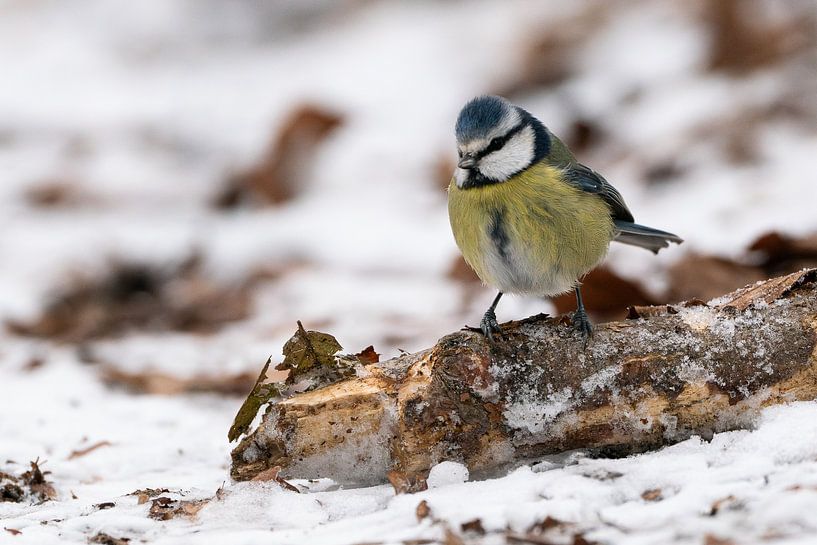Buy this bird art The blue tit by Glenn Vlekke on canvas, ArtFrame, poster and wallpaper, printed on demand in high quality.
About "The blue tit"
by Glenn Vlekke
About the artwork
The blue tit, also known as Cyanistes caeruleus, is a small songbird commonly found in Europe and Asia. Here are some interesting facts about the blue tit:
Appearance: Blue tits have a distinctive blue cap on their heads, a yellowish belly, and wings with white stripes. They are about 11 to 12 centimeters long.
Habitat: Blue tits are common residents of forests, gardens, parks, and other wooded areas. They can be found in a wide range of habitats, from urban areas to rural landscapes.
Diet: These birds are omnivorous and primarily feed on insects such as caterpillars, spiders, and beetles. In winter, they often add seeds and nuts to their diet.
Nesting: Blue tits typically build their nests in tree cavities, nest boxes, or other sheltered locations. They use materials like grass, moss, and feathers to construct their nests.
Behavior: Blue tits are lively and active birds often seen hopping from branch to branch in search of food. They are known for their curious nature and can sometimes observe human activities from a safe distance.
Song: The song of the blue tit consists of a series of clear and cheerful notes, often accompanied by rapid trills. Males often use their song to mark their territory and attract females during the breeding season.
Breeding Season: The breeding season of the blue tit usually starts in early spring, from March to July, depending on the location. They lay an average of 8 to 12 eggs per clutch.
Migration: While blue tits are generally sedentary birds, some populations may migrate to warmer areas during the winter months.
Protection: Blue tits are generally not considered threatened species, but like many other birds, they face some pressure from habitat loss and environmental changes.
The blue tit is a charming and common bird in many European and Asian environments, often appreciated for its lively appearance and cheerful song.

About Glenn Vlekke
 Germany
Germany Ordered in August 2025
Ordered in August 2025
 Germany
Germany Ordered in May 2022
Ordered in May 2022
 Netherlands
Netherlands Ordered in March 2024
Ordered in March 2024
 Germany
Germany Ordered in September 2020
Ordered in September 2020
 Germany
Germany Ordered in February 2022
Ordered in February 2022
 Netherlands
Netherlands Ordered in February 2020
Ordered in February 2020
 Netherlands
Netherlands Ordered in January 2021
Ordered in January 2021
 Netherlands
Netherlands Ordered in October 2023
Ordered in October 2023
 Netherlands
Netherlands Ordered in October 2022
Ordered in October 2022
 Netherlands
Netherlands Ordered in February 2018
Ordered in February 2018
 Germany
Germany Ordered in May 2021
Ordered in May 2021
 Netherlands
Netherlands Ordered in March 2018
Ordered in March 2018

About the material
ArtFrame™
Interchangeable Art Prints
- High-quality print
- Easily interchangeable
- Acoustic function
- Large sizes available
Discover the artworks of Glenn Vlekke
 Tulip in the fieldGlenn Vlekke
Tulip in the fieldGlenn Vlekke Swan with youngsGlenn Vlekke
Swan with youngsGlenn Vlekke Swans youngGlenn Vlekke
Swans youngGlenn Vlekke South Africa at sunsetGlenn Vlekke
South Africa at sunsetGlenn Vlekke TickGlenn Vlekke
TickGlenn Vlekke Highland cattle with sunsetGlenn Vlekke
Highland cattle with sunsetGlenn Vlekke Duck on iceGlenn Vlekke
Duck on iceGlenn Vlekke DuckGlenn Vlekke
DuckGlenn Vlekke Hawthorn flowerGlenn Vlekke
Hawthorn flowerGlenn Vlekke landscape with cloudsGlenn Vlekke
landscape with cloudsGlenn Vlekke mountains landscape with water sun and rain with beautiful cloudsGlenn Vlekke
mountains landscape with water sun and rain with beautiful cloudsGlenn Vlekke Flat piece on a mountain with fjord in the backgroundGlenn Vlekke
Flat piece on a mountain with fjord in the backgroundGlenn Vlekke Landscape: Mountains where the clouds reflect into the lakeGlenn Vlekke
Landscape: Mountains where the clouds reflect into the lakeGlenn Vlekke Autumn Mushroom FallowrussulaGlenn Vlekke
Autumn Mushroom FallowrussulaGlenn Vlekke Veluwe forest at the start of autumnGlenn Vlekke
Veluwe forest at the start of autumnGlenn Vlekke Hellefot lock at sunsetGlenn Vlekke
Hellefot lock at sunsetGlenn Vlekke Rough forest in the black forestGlenn Vlekke
Rough forest in the black forestGlenn Vlekke CrocusGlenn Vlekke
CrocusGlenn Vlekke DuckGlenn Vlekke
DuckGlenn Vlekke Tauros beefGlenn Vlekke
Tauros beefGlenn Vlekke













 Animals
Animals Birds
Birds Photo wallpaper
Photo wallpaper Photography
Photography Serene Peace
Serene Peace Snow
Snow









